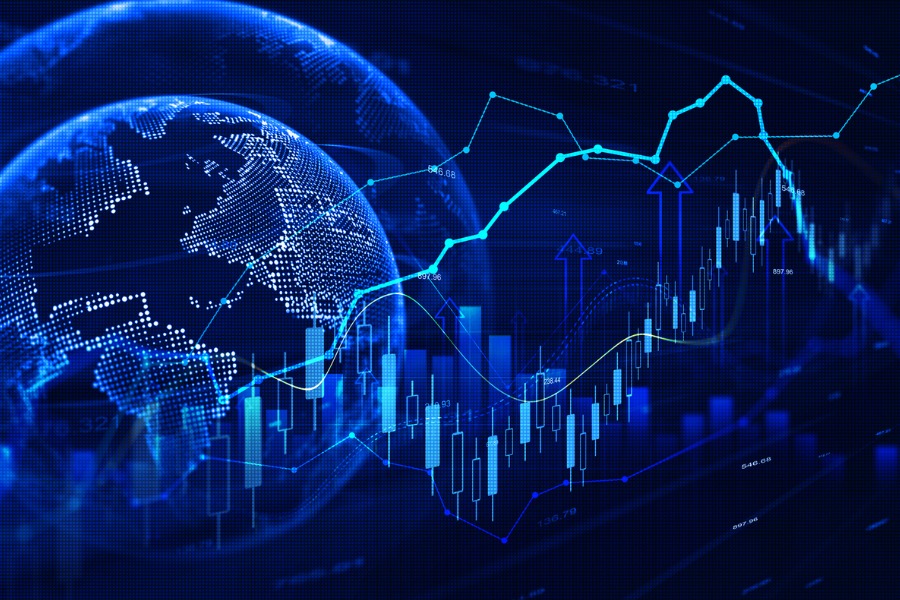

Investors may underestimate the potential for further gains in stocks and other risk assets but they should hedge against the threat of a weaker dollar, higher bond yields and greater volatility, according to KKR & Co.
Loosening financial conditions, policy easing by global central banks, improving productivity and a lack of net issuance provide a supportive backdrop for risk investments, said Henry McVey, head of global macro and asset allocation at the alternative asset manager.
“As we look ahead at KKR, we remain positive,” McVey wrote in the firm’s mid-year outlook. “To be sure, we expect more market drawdowns than in the past,” but there are a number of factors that “will continue to drive this cycle both further and longer than many think.”
McVey and his colleagues predict the S&P 500 Index will rise to 6,550 by year-end, or about 5% above the current level. The benchmark may climb as much as 15% in a bullish scenario, whereas in a bearish one it may fall 13%, based on KKR’s forecasts.
Despite the firm’s overall positive outlook for the world’s biggest economy, McVey called for investors to increase their holdings of global stocks, expecting the US growth premium will diminish as the rest of the world boosts fiscal stimulus.
“We suggest investors stay invested but diversify their portfolios by increasing exposure to international equities alongside their core U.S. holdings,” he wrote.
KKR also recommends adding hedges in the second half to protect against potential market swoons as geopolitical and policy risks increase.
“Looking at the big picture, we want to reiterate our view that ‘this time is different,’” McVey wrote. “Specifically, we believe that we have moved from a period of low growth, low inflation, tight fiscal, and loose monetary policy, towards one with higher nominal GDP, loose fiscal policy, bigger deficits, and more geopolitical uncertainty.”
Such a regime change means investors need to build a portfolio with “a focus on hedging against a weaker dollar, higher long-term rates, and more equity volatility,” he said.
By KKR’s estimate, the dollar is overvalued by about 15%-to-20%, placing it near some of the highest levels seen in recent history.
McVey’s team expects Treasury 10-year yields to stay in a range between 4.25%-to-4.5% for this year, versus the current level of about 4.48%.
“Our best estimate is that term premium needs to rise to accommodate worsening fundamentals, which means that bond yields will not rally much as rates fall and that the currency will continue to weaken,” McVey wrote.
“However, we do not expect 10-year yields to become unglued on a sustainable basis the way some investors fear,” he said.
© 2025 Bloomberg L.P.

The co-founder of IFG discussed with InvestmentNews the unique opportunity that remaining independent offers to build a successful firm.

Three industry leaders will join the hybrid RIA's president and LPL alum, Andy Kalbaugh, to help guide its organic and merger-based growth strategy.

Latest survey shows digital tactics and empowerment top of mind for early-career advisors to be satisfied with their firms.

Investment banking fees far exceeded analysts' expectations.

Many are unprepared – and know it – according to a new survey.
Orion's Tom Wilson on delivering coordinated, high-touch service in a world where returns alone no longer set you apart.
Barely a decade old, registered index-linked annuities have quickly surged in popularity, thanks to their unique blend of protection and growth potential—an appealing option for investors looking to chart a steadier course through today's choppy market waters, says Myles Lambert, Brighthouse Financial.
